04 /08/25 UPDATE: The review has been revised to include findings from the instrumented tests conducted on the T8 version.
Auto manufacturing is challenging. It involves making large financial gambles amounting to millions or even billions of dollars, aiming to align a company with predictions about where the market may head over several years, followed by constant readjustments as reality unfolds. Nobody consistently predicts correctly, not even majority of the times. Initially, the strategy involved launching an electric, three-row model scheduled for 2025. Volvo EX90 That has just been introduced to take the place of the reliable gasoline-powered model. XC90 The Volvo XC90 has been a top-selling vehicle in the U.S. over the last ten years and offers a plug-in hybrid option. However, electric vehicle adoption hasn’t increased as rapidly as expected; thus, the XC90—first introduced for the 2016 model year—is receiving minor enhancements to stay relevant on dealer lots for several additional years. There’s a small caveat though: These upgrades will be available only starting mid-2024 for the 2025 models, hence some early 2025 vehicles might not include these changes yet. Despite this, Volvo is promoting the enhanced version as a “2025.5,” although technically, all units retain the same 2025 VIN designation.
During its 10th model year, the XC90 can be considered mature within the automotive industry; however, its enduring appeal speaks volumes about its original quality as it remains contemporary even now. The visual modifications introduced this time around are relatively subtle yet effective enough to maintain its freshness: a newly contoured hood featuring refined creases sits atop thinner headlamps and an updated front grille adorned with angular chrome accents. Additionally, optional larger wheel sizes of 20 inches, 21 inches, and 22 inches come with refreshed designs, along with slightly darker tail lamps and a brand-new Mulberry Red paint option.
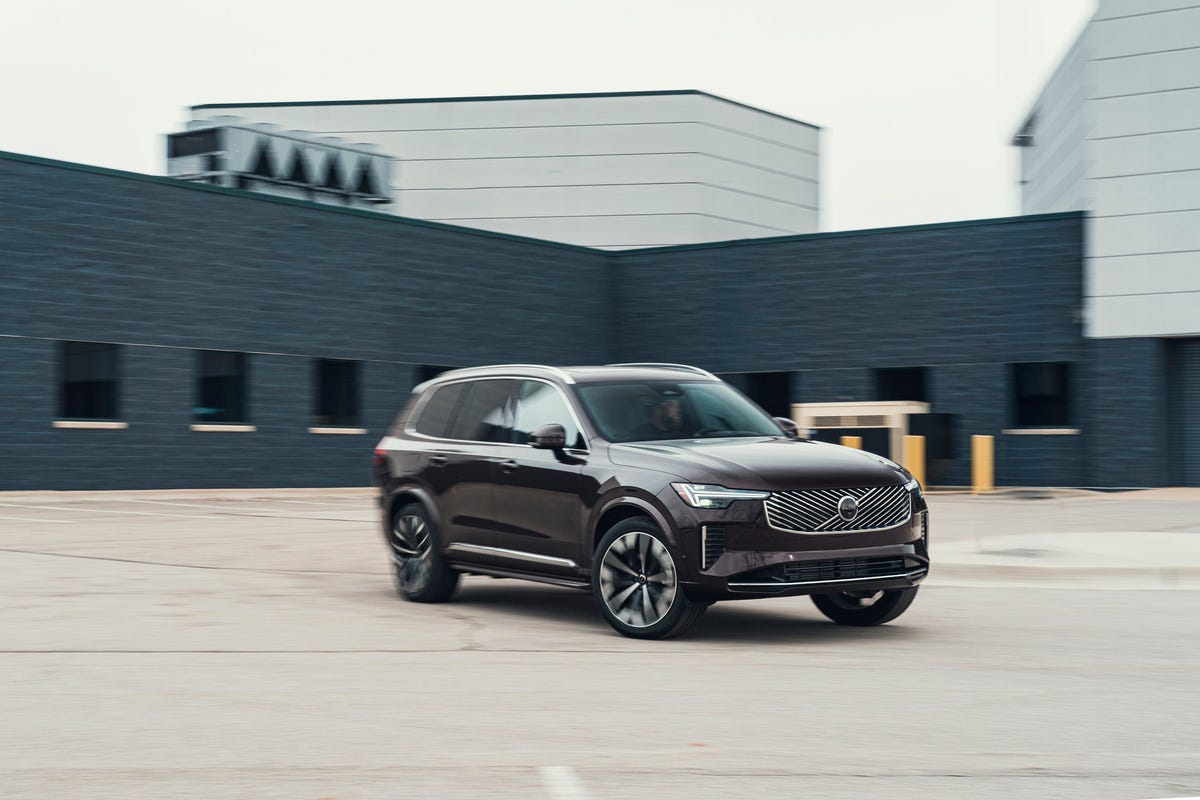
Inside, you'll find a Google-powered entertainment system featuring an updated design shown on a bigger 11.2-inch display. This new screen is notably vibrant and clear, and we thought the arrangement was user-friendly. However, responsiveness to touch commands could be sluggish at times. A plus point for this Android-driven setup is access to its extensive application library. As an illustration, although our vehicle lacked the built-in Waze app from the start, downloading it was straightforward; the integrated version appears superior and offers more features compared to both Apple CarPlay and Android Auto versions.
New interior trim choices have been introduced, and we particularly like the navy-on-navy herringbone pattern used for both the seats and door panels. This understated yet exquisite detail has come to symbolize Volvo’s remarkable comeback over the past ten years, starting with the second generation of the XC90. Additionally, one surprising feature—considering how luxurious these materials feel—is that the seating fabric consists of recycled polyethylene. A novel faux leather alternative without hides is available too, along with genuine Nappa leather, which was featured in our high-end Ultra T8 plug-in hybrid model. Ambient lighting now highlights the beautiful ash wood trim instead of casting light beneath it.
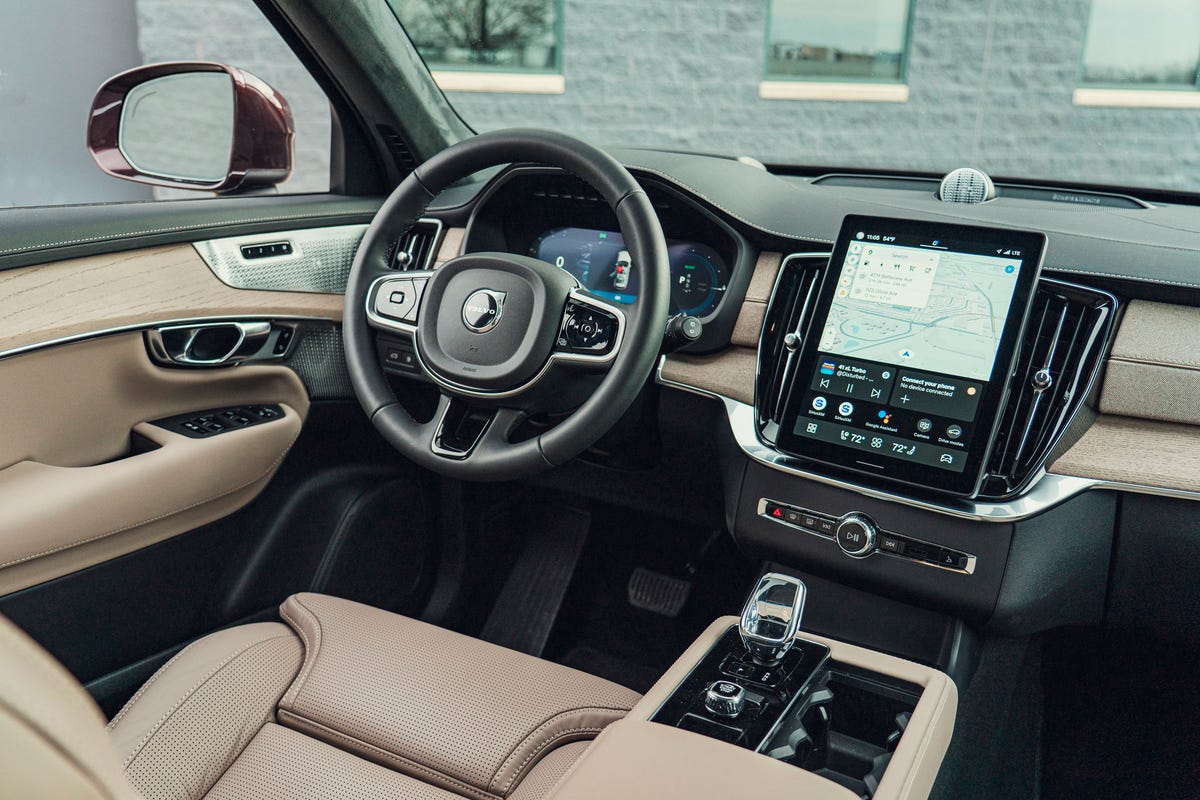
The XC90’s engines remain unchanged from previous models. Each version comes equipped with an eight-speed automatic transmission and features all-wheel drive exclusively. The B5 variant draws power from a turbocharged 2.0-liter four-cylinder engine delivering 247 hp. In contrast, the B6 model enhances performance through the addition of an electric supercharger, boosting output to 295 hp. At the top of the lineup, the T8 stands out as a 455-hp plug-in hybrid. This configuration includes a 310-hp turbocharged 2.0-liter four-cylinder at the front wheels alongside a rear-axle setup consisting of a 145-hp motor paired with a 15-kWh battery capable of providing up to 32 miles of pure EV travel—unchanged from prior years' offerings.
After our first experience driving the T8 in Denmark and Sweden, we recently put another one through its paces here in our home state of Michigan. During our high-speed highway efficiency tests conducted at 75 mph, the XC90 managed to travel about 25 miles using just electricity before transitioning into hybrid mode. Once in this mode, it achieved an average fuel economy of around 25 mpg. This level of electric-only range was quite practical; during varied city and suburban drives, we observed approximately 30 miles of all-electric operation. In urban settings, there’s sufficient electric power for keeping pace with traffic flow, although aggressive acceleration onto highways tends to trigger the gasoline engine. What sets the XC90 apart from numerous other plug-in hybrids is that its motor propels the rear wheels directly without going through a gearbox, eliminating gearshift interruptions when operating solely on battery power. However, like many others in its class, the XC90 suffers from slow charging times—it maxes out at 3.7 kW—taking over five hours to fully replenish its batteries, which is relatively lengthy compared to most other models in this category.
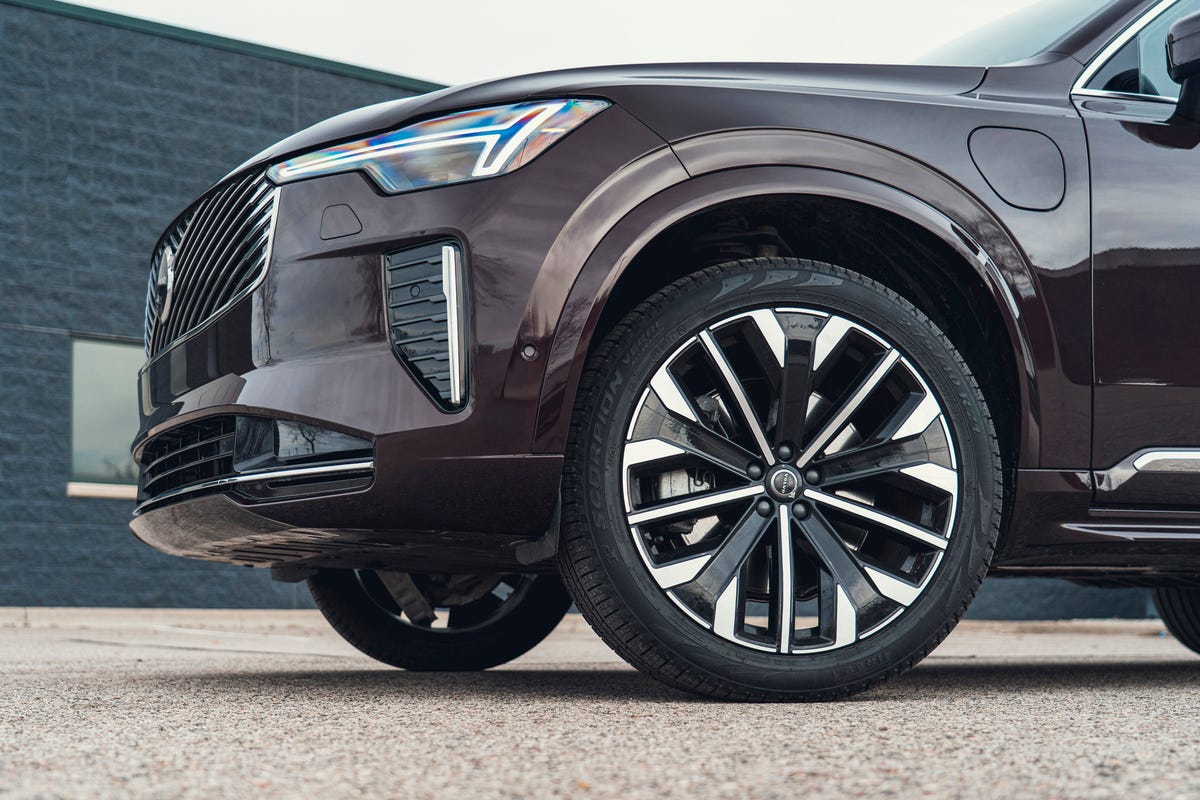
The most recent XC90 model was slightly sluggish from a standing start, requiring 4.8 seconds to hit 60 mph and crossing the quarter-mile mark in 13.4 seconds at a speed of 105 mph—considerably less brisk than expected. BMW X5 50e , but around the neighborhood of the Porsche Cayenne E-Hybrid and quicker than the Lexus TX550h+.
The most significant modification involves enhancements to the basic suspension system. It retains the previous design, featuring control arms at the front and a multi-link configuration at the rear, but introduces an unconventional element: a crosswise composite spring rather than coil springs. However, the fundamental shock absorbers now include a bypass mechanism designed to handle abrupt, rapid hits by opening up this bypass. Consequently, when faced with harsh conditions, the car can more effectively cushion these shocks. As a result, engineers could opt for gentler spring settings both upfront and behind, although they did stiffen the front stabilizer bar somewhat. Nonetheless, during our test drives through Southern Sweden’s impeccably maintained roadways, we couldn’t fully gauge the benefits since the surfaces weren’t challenging enough. Adding another layer of complexity was the fact that all vehicles tested came equipped with winter-specific tires. Traditionally, ride comfort isn't one of the XC90 models' strengths, hence anticipation builds around observing whether the revised suspension would fare better against Ann Arbor's potholed streets. Upgrading to air suspensions along with adaptable damping mechanisms continues to be available only as part of the highest-tier Ultra package at an additional cost of $1800. Interestingly, despite adjustments made to their calibration, these systems seemed overly firm even under the less-than-perfect driving conditions typical of Winter-stricken Ann Arbor thoroughfares.
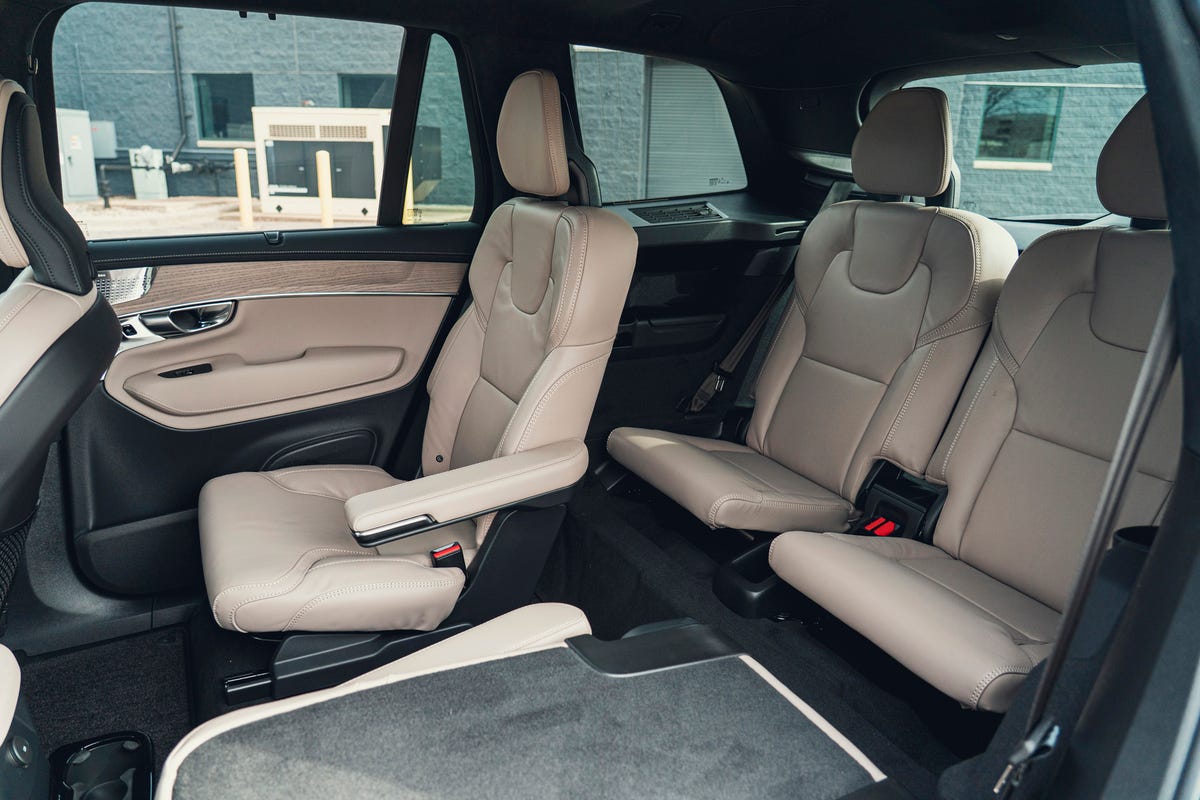
Just like before, the XC90 offers a driving experience that feels more capable than exhilarating, which works perfectly well for a luxury family wagon. These comfortably firm seats have always been one of our favorites and stand among the finest you'll find in any car. Additionally, this model includes distinctive features, such as a hidden booster seat within the middle section of the second-row bench; when needed, it can be raised easily to ensure smaller passengers sit correctly positioned with their seat belts. While the key dimensions remain unchanged—making the cabin spacious enough for adults even in the back row—the third row is quite cramped and suitable mainly for kids. Nonetheless, the overall external design keeps the XC90 looking robust yet refined. mid-size , which implies that certain rivals such as the Mercedes-Benz GLE offer only a third row as an option; others like the Porsche Cayenne Don't provide it at all. Here, it's customary.
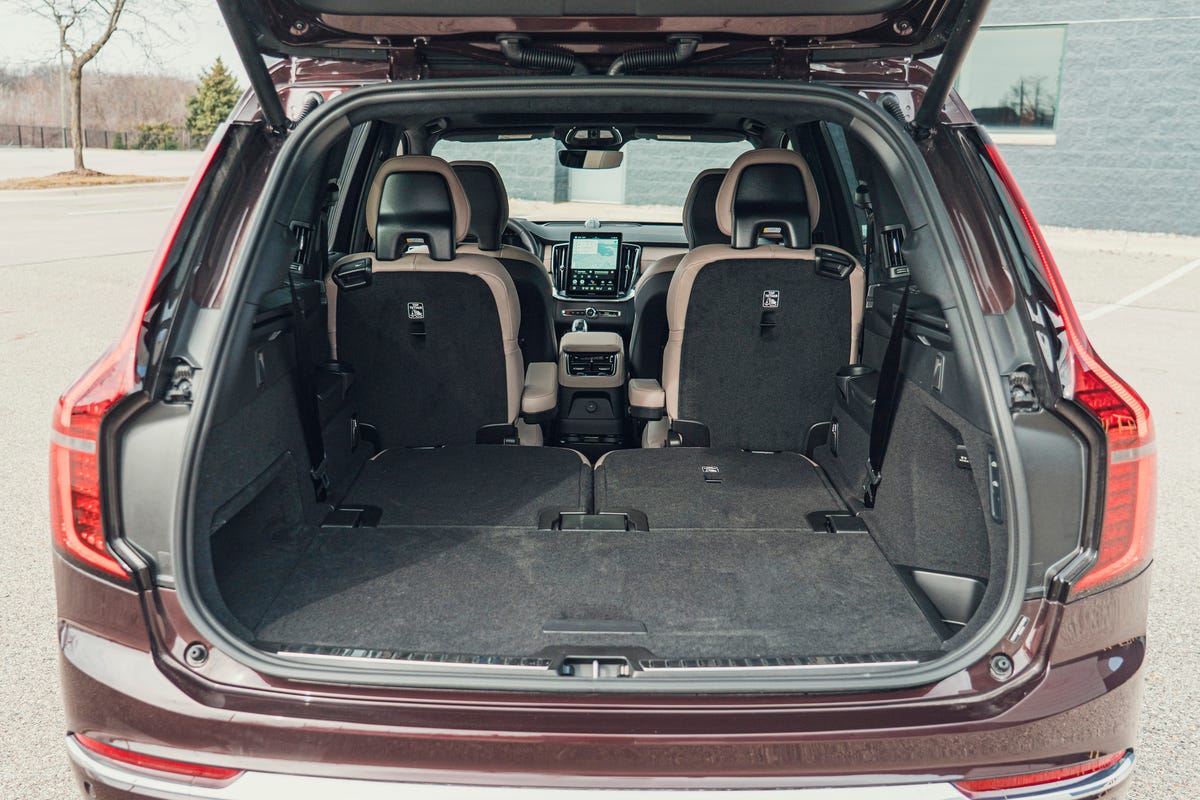
We tested the powertrain setups, and even though the B5 delivers strong mid-range torque, it seems sluggish under heavy acceleration. When compared to similar models, its predicted time of around seven seconds for reaching 60 mph comes across as unimpressive, despite having one of the lower base prices within its class. At higher revs and heavier loads, the B5’s turbo-four can sound quite noisy, yet it remains fairly quiet otherwise. In contrast, the T8 variant uses increased boost pressure from its turbo-four, producing a superior sound profile and not needing to work as hard thanks to immediate assistance from the electric motor during demand. Both systems transition smoothly between each mode, and the brake pedal offers consistent feedback regardless of whether it triggers regenerative or conventional braking mechanisms.
We would quickly write off this minor update as insufficient and tardy if the XC90 didn’t start out so strong, and we continue to favor it compared to numerous more recent rivals. The refreshed 2025 models come at a price increase of about $1000 overall, and these upgraded versions hit dealerships in early 2025.
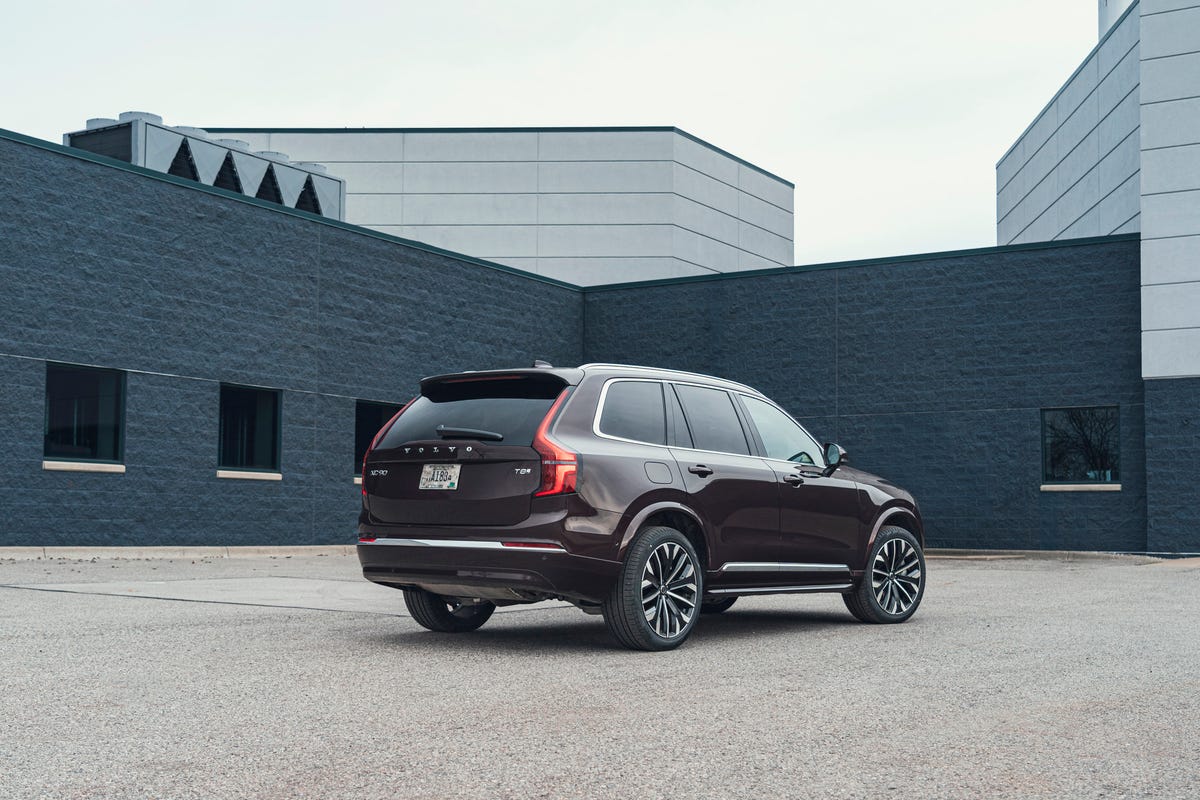 Interested in buying a car? Discover your perfect match on the MSN Autos Marketplace.
Interested in buying a car? Discover your perfect match on the MSN Autos Marketplace.
